Recently on
Rum Soaked Fist someone asked a question about the importance of kai-he, which loosely means ‘opening and closing.’ While this may be a good translation of the Chinese, the metaphor is confusing because it is easily conflated with the process of emptying and filling which requires opening key gates in the body. To properly do kai-he, all the gates must remain open, there is no closing action. The correct metaphor for kai-he is expanding and shrinking the way most wild animals do when they are showing dominance or submission.
As is often the case, the subject of shrinking and expanding does not have an inherent order. Like so much of martial arts it is actually a process of unlearning (apophatic). In attempting to invent a curriculum, the goal should be to reveal an underlying order, a natural way of being. That said, here is one possible curriculum order.
Level 1. Individuate shrinking and expanding in different parts of the body. (
Kumar Frantzis created a long list of different body systems which can be expanded and condensed, beginning with individual joints, muscles, soft tissues, internal organs, glands, blood vessels, meridians, the nine palaces, and cerebrospinal fluid.)
Level 2. Shrink and expand the entire body with the breath.
These first two levels do not take long to develop (a year or two at most) but in order to maintain a big range of movement they require regular practice.
Level 3. Shrink and expand the whole body without the breath. That is, de-link the movement from the breathing. This will make the movement softer and will reveal
jin, or natural structure. To do level 3 well, requires that the spacial mind relax and expand out beyond the body itself.
Level 4. At level 4 the spacial mind does many complex operations including shrinking while the body is expanding and the reverse, expanding while the whole body is shrinking. To do this level well the body must be completely empty of tension and all the gates must be open--then one's power will increase dramatically and one's root will disappear.
Level 5. Only the spacial mind is actively moving, the body follows unconsciously.
Because we are dealing with an entirely natural process it is possible to skip directly to level five. In the theater world, the principle of using shrinking or expanding to control space is sometimes called a change in status. It is the basis of dominance and submission in all animals. If you see two actors on a stage set as an office or a home you should be able to tell which actor owns the space by his or her movements and positions. If it is my office I’ll move as if everything is part of my big body, a guest will move only a limited amount of space around his body, if he sits in my chair he will look stiff. Imagine the physicality of a worker sneaking into the bosses office to smoke one of the bosses cigars when he thinks the boss is away for the week, and then imagine the changes in the physical use of space when the boss suddenly walks in.
Because this is all automatic in real life, it can be taught with games. Actors can use tricks to get their behavior to seem real. Unconsciously we are all masters of shrinking and expanding, but when the process becomes conscious it has a disorienting affect and it tends to look fake. So the trick is to make it conscious and then put your mind on something else so that it becomes unconscious again.
My favorite game for teaching this is called “siblings”:
A lazy brother, who doesn’t work, sits in a chair in the middle of the room.
The hard working brother comes home from work and finds the lazy brother’s underwear hanging from the door nob. The lazy brother is sitting in the same spot he was when the hard working brother left for work.
The scene begins with the hard working brother making an accusation. The director tells the lazy brother (secretly before the scene begins) that he is to admit to every accusation and that when the hard working brother moves toward him, he is to take up more space, he is to expand his body. They improvise from there.
I first played this game with
Keith Johnstone when I was 15. While I was playing it with a partner I suddenly realized that I already knew the game, that I played it all the time unconsciously with my sister. I was good at this game, by changing my body size and shape I felt like I could move my partner around the room at will. That evening when I got home my sister, as she was in the habit of doing, accused me of something I didn’t do, “Did you take my notebook?” “Yes,” I answered while simultaneously expanding. “What? You took it!” Her eyes flared, but because I expanded she couldn’t come closer, she had to move away. “Yes,” I said, “There is some pretty interesting stuff in there.” I shrunk a little bit and she moved in to take a bite “YOU READ IT!” Casually expanding again, I said, “Juicy.” She moved back. I could control her with my movements. Within a minute I had her rolling on the ground tearing out her hair.
This was, I suppose, an enlightenment moment for me. I had a choice at that moment to become a sociopath or to dedicate my life to truth and justice.

The monkey dance of dominance and submission that
Rory Miller talks about works in the same way. Perhaps that’s why I haven’t been in a fight since I was 15. Almost all fighting is monkey dance, almost all fighting is social and follows unconscious social rules, status transactions. Asocial violence is a whole different cup of tea. A desperate drug addict just wants to take your money and get away without being noticed, no need to assert dominance, it doesn’t matter to them whether you are still breathing or not.
This seems to be the source of a lot of confusion because shrinking and expanding is still the most efficient way to fight. A tiger hunting still shrinks before it pounces. It is crucial for dominance and submission, and it is also crucial for generating power while avoiding counter attack. Some things are the same, some are different. A dog challenging another dog will stare it in the eyes and make a low growl, a dog submitting will roll over belly-up and squeak. Dogs hunting a wild boar will attack the buttocks, and calves. A policeman subduing a threat wants the threat face down on the ground because it’s easier to control him. A wrestler wants his opponent pinned face up because it is more humiliating.
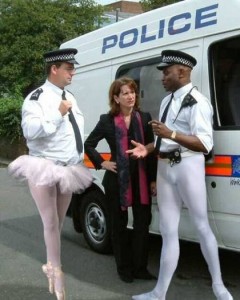
Great actors, great martial artists, and great dancers control space, they don’t do technique. Many years ago I studied ballet. I noticed that sometimes there were dancers who seem to have good technique but still weren’t dancing. Ballet is a high status dance form. The dancers are floating on clouds all the time. The neck is always exposed, like the alpha wolf. The legs are always turned out, the chest always lifted. Sometimes a young dancer is introverted and yet is forced by the training to move like a high status princess. The physical body can be open, expansive and exposed while the spacial mind, the spirit body, is sucked in close. This disconnect is probably the source of a lot of compulsive behavior like chain smoking or not eating.
Over eating and muscle trucks among martial artists could be a similar phenomenon.
Extremes of status can be very entertaining. Think midget wrestling, sumo, and the teachers in the cartoon South Park.
Being a good actor or dancer does not make someone a good fighter, even if they have the ability to manipulate space outside of their bodies. Even if they have great unconscious shrinking and expanding abilities. There is more to it than that. And it is also true that someone can have good fighting skills without having mastered the shrinking and expanding of the spacial mind. But put them together and they reveal enormous natural freedom.
The order in which one learns, doesn’t matter. The levels I described at the beginning of this post can be jumbled up any which way you want. In the end, however, there is an order, it is the order in which social behavior (conduct/qi), our physical body (jing), and our sense of place (shen) interact as one.

 Lately I have been teaching new Taijiquan students two basic daoyin animals, the cat and the dog. They are somewhat opposite ways of moving, but in my current way of thinking they both embody monster motor movement. They each begin from a pre-locomotor physicality and progress to two very different sorts of four legged walking. I'm avoiding the word crawling because everyone already thinks they know what that means, and what I'm talking about is animal specific movement. I then try to get students to use this information to animalize their Tai Chi.
Lately I have been teaching new Taijiquan students two basic daoyin animals, the cat and the dog. They are somewhat opposite ways of moving, but in my current way of thinking they both embody monster motor movement. They each begin from a pre-locomotor physicality and progress to two very different sorts of four legged walking. I'm avoiding the word crawling because everyone already thinks they know what that means, and what I'm talking about is animal specific movement. I then try to get students to use this information to animalize their Tai Chi.

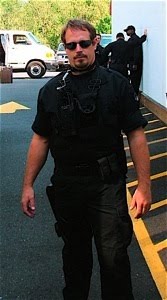
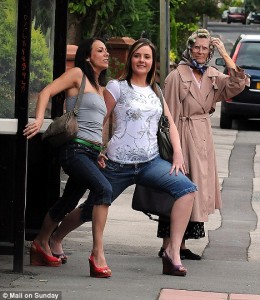 Can we move our body unconsciously? If I am not conscious of a movement, how can I be its cause? On the other hand, how do we know that so called conscious movement is really conscious? Maybe conscious movement is actually unconscious movement observed and then a split second later justified? Maybe conscious movement is actually unconscious movement which we just happen to have planned in advance? Or put another way, maybe all movement is unconscious, but some movement has a kind of mental tension surrounding it, attempting to guide it and control it.
Can we move our body unconsciously? If I am not conscious of a movement, how can I be its cause? On the other hand, how do we know that so called conscious movement is really conscious? Maybe conscious movement is actually unconscious movement observed and then a split second later justified? Maybe conscious movement is actually unconscious movement which we just happen to have planned in advance? Or put another way, maybe all movement is unconscious, but some movement has a kind of mental tension surrounding it, attempting to guide it and control it.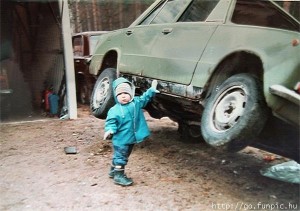 This is where I start getting excited. I've begun seeing unconscious power in other people. I can see it in people waiting for the bus. This natural power is in my opinion available all the time when people are relaxed. I see the unconscious power but I also see two forces inhibiting it.
This is where I start getting excited. I've begun seeing unconscious power in other people. I can see it in people waiting for the bus. This natural power is in my opinion available all the time when people are relaxed. I see the unconscious power but I also see two forces inhibiting it.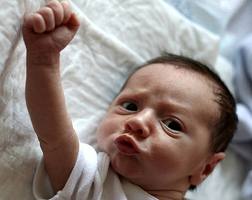 Just as a side note here, my ability to see this unconscious power has developed in conjunction with my own ability to express unconscious power. But I also believe that my own mental training was for a long time inhibiting my ability to see unconscious power in others. The type of analytic anatomic physiological thinking which allows us to see individual body structures like muscles, may be replacing what is actually happening with a mental proxy. And thus, by eventually dropping those complex ideas about what we are, suddenly something that was always there appears.
Just as a side note here, my ability to see this unconscious power has developed in conjunction with my own ability to express unconscious power. But I also believe that my own mental training was for a long time inhibiting my ability to see unconscious power in others. The type of analytic anatomic physiological thinking which allows us to see individual body structures like muscles, may be replacing what is actually happening with a mental proxy. And thus, by eventually dropping those complex ideas about what we are, suddenly something that was always there appears. The monkey dance of dominance and submission that
The monkey dance of dominance and submission that  Great actors, great martial artists, and great dancers control space, they don’t do technique. Many years ago I studied ballet. I noticed that sometimes there were dancers who seem to have good technique but still weren’t dancing. Ballet is a high status dance form. The dancers are floating on clouds all the time. The neck is always exposed, like the alpha wolf. The legs are always turned out, the chest always lifted. Sometimes a young dancer is introverted and yet is forced by the training to move like a high status princess. The physical body can be open, expansive and exposed while the spacial mind, the spirit body, is sucked in close. This disconnect is probably the source of a lot of compulsive behavior like chain smoking or not eating.
Great actors, great martial artists, and great dancers control space, they don’t do technique. Many years ago I studied ballet. I noticed that sometimes there were dancers who seem to have good technique but still weren’t dancing. Ballet is a high status dance form. The dancers are floating on clouds all the time. The neck is always exposed, like the alpha wolf. The legs are always turned out, the chest always lifted. Sometimes a young dancer is introverted and yet is forced by the training to move like a high status princess. The physical body can be open, expansive and exposed while the spacial mind, the spirit body, is sucked in close. This disconnect is probably the source of a lot of compulsive behavior like chain smoking or not eating.